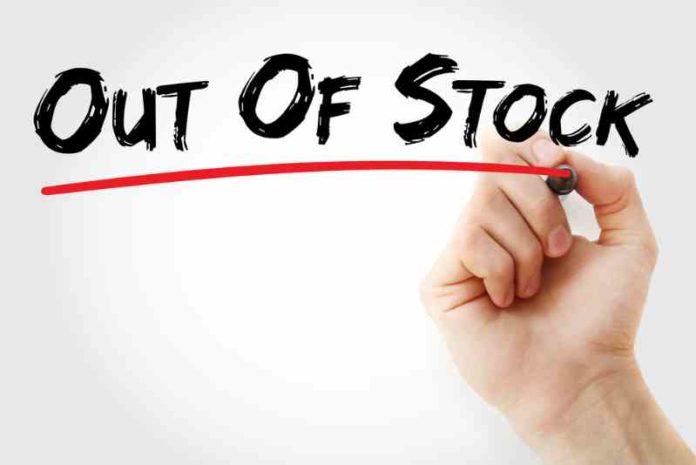By Jake Rheude
Stockouts can destroy your reputation online and cause severe issues with your partners and them looking for another company who can more reliably have goods on their shelves. Not only are you not selling, which can drive away customers, but you also risk losing your rankings in product categories and searches on those large e-commerce platforms.
You don’t want to let your customer satisfaction levels or your bottom line take that hit.
Fortunately, you can quickly prepare to limit the likelihood of stockouts and their impact by planning your inventory, predicting demand, and routinely checking to make sure everything is running right. Here are a few thoughts on each step to help you get started.
Plan
The first step to preventing stockouts is to look at your inventory — all of it. You need an accurate count of your inventory and an understanding of where it goes and when. During this phase, you’re not changing how you allocate inventory or order it; you’re just trying to find out more about your inventory and how it is used right now.
The only substantial change here could be in your software and tracking tools. You can use WMS comparison tools like this one to start figuring out what works for your niche and your budget. This can make it much easier to get your data together and ensure you’re able to track everything relevant to your warehouse and your business.
Proper planning includes tracking a wide range of information. Here are some of the core inventory data you’ll want to consider:
- Inventory levels.
- Inventory caps, how much you can fit in your warehouse.
- Lead time for each product and supplier.
- Lead time buffer or lead time demand. This is the number of your products that you need to have in stock to cover your orders between the time you re-order products and when they arrive.
- Reorder point is an inventory level or number that should prompt your re-order. This should be higher than your lead time buffer, and it’s smart to have some safety inventory to protect your business further.
Those are just a start, and there are plenty more warehouse metrics to track to help you run a more efficient operation in the background.
It’s easy to see patterns in your orders and deliveries. One thing getting smart about your data and setting a plan can reveal is that there are out of stock patterns for most businesses too.
Predict
The inventory levels and other things you have to do to avoid stockouts changes throughout the year, and sometimes throughout the week. You need the flexibility to adapt to changes in demand during your low points and peaks, with plenty of room to stock up before demand hits.
Your best path to long-term security against stockouts is to collect historical company, sales, and partner data. Learn what you sell on average and how your demand changes. To get there, integrate as many systems as possible, so you’re using all of your data to make predictions.
Online and ecommerce businesses are in a little bit of a better shape here because you typically have software that can track some of your sales data already. If you’ve got retail locations, pull your POS sales estimates based on inventory and store scanner data. Knowing when you’re getting orders versus when there are fewer sales might be an indication that you get stockouts or low inventory levels at specific times before you’re restocking.
Take your prediction to the best conclusion by using it to set your automatic inventory restocks and minimum levels for reorders. If you have a WMS that we mentioned in the first step, ensure that it is automatically counting and tracking your inventory levels. It’s also a handy tool for incorporating advanced concepts like returns management into your business plan and projections.
If you’ve still got a manual cycle count, try to run this a little more often closer to the times you historically reorder your goods.
Check Again and Again
Ensuring that stockouts aren’t a threat to you tomorrow or in the future requires vigilance.
Every step you’ve taken to prevent it this week has to be taken again and again. So, put together a checklist for your team. Thankfully, the beautiful digital age has made it so many of these tasks can be automated or at least easy to get reminders before they slip our minds.
Not only should you be using your inventory system but verify that its data is correct. When it incorporates information from your vendors, reach out to see if things are the same on their end. Any inventory discrepancy or bottleneck should be addressed immediately.
All such checks will also help you determine other issues too, such as theft or product spoilage. Are things getting damaged? Or, do you have a benefit you can utilize like cross-docking? Are there ways you can improve your cash flow to have a little extra buffer?
Once you’ve got a handle on inventory and preventing stockouts, you can also start going stronger in other areas related to your inventory. It’ll give you a good background for marketing and sales efforts, help you plan for new products, and much more. Plus, you’re a little more likely to have loyal customers ready to try your next new thing.
Jake Rheude is the Director of Marketing for Red Stag Fulfillment, an ecommerce fulfillment warehouse that was born out of ecommerce. He has years of experience in ecommerce and business development. In his free time, Jake enjoys reading about business and sharing his own experience with others.
Stockout stock photo by dizain/Shutterstock







